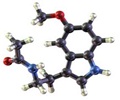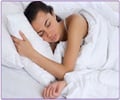Sleep science was of little help in matters of sleep till late the reason being high cost associated with finding solutions.
Sleep science was of little help in matters of sleep till late the reason being high cost associated with finding solutions. But as a ray of new light comes the IST project 'Sensation' which is a project of 46 partners from 20 different countries, addressing sensing of physiological parameters, core computation, medical and industrial research. They aspire to develop a multipurpose sensing platform consisting of 17 micro sensors and two nano sensors, connected through a local area network.
The project coordinator Dr Evangelos Bekiaris puts the vision in words and says,” The sensors will allow you to sleep at home on, for instance, a mattress with sensors instead of going to a hospital which is much more comfortable and the test becomes more precise. Today, you will have to go to a hospital sleep lab for 1-2 nights and have your sleep measured to evaluate your sleep. These tests are costly and since monitoring sleep cannot be done in your home environment they are not as reliable.” The sensors will be integrated into a wide range of materials such as bed and pillow textiles, wrist straps, seat linings and the frames of glasses and would be wirelessly integrated through a computer network. The measurements they would take would range from brain activity, heart rate, eye to muscle movements during your waking and sleeping hours.Halfway through the funding part the project has shown encouraging results.
“We have developed something which is truly unique, with two extensive databases of sleep data, one with data of normal sleep with 350 participants and another one with sleep data of 400 people monitored while working or driving, crossing the stage between vigilant to sleep. About half of these people were tested in a driving simulator but the other half was tested driving on highways with double command cars. The tests show a significant difference in the persons reactions, as the persons in the simulator were calmer, knowing they were part of a test, whereas the people on the highways were really fighting sleep. It shows that when monitoring people in their daily lives there are significant differences in result.”,said Dr. Bekaris.
Probe areas are immense. The project leader explained, “Take falling asleep at workplaces as an example. Today you have techniques that might alert you as you fall asleep, but what we want is a system that will alert the person already before this happens. In some work environments or while driving it might already be too late if you have started dozing off.”
Commenting in the progress he said, “We currently have nine sensors ready and plan to present the first sensors and prototypes at the International conference on ‘Monitoring sleep and sleepiness - from physiology to new sensors’ which will be held in Switzerland 29-30 May 2006.”











